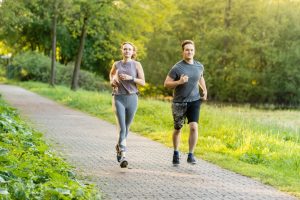Introduction
In the pursuit of a longer and healthier life, striking the right balance with exercise is crucial. Exercise physiology specialist Dr. Sarah Thompson unpacks the latest scientific findings, offering personalized considerations and health benefits of exercise practical tips to guide you toward the ideal amount of physical activity for enhanced well-being.
The Science Behind Longevity and Exercise

Dr. Thompson delves into the scientific underpinnings of how exercise contributes to a longer and healthier life.
Cardiovascular Health
- Heart Health: Regular exercise is linked to improved cardiovascular health, reducing the risk of heart disease and promoting efficient blood circulation.
- Blood Pressure: Physical activity helps regulate blood pressure, contributing to the overall well-being of the cardiovascular system.
Metabolic Benefits
- Weight Management: Exercise plays a key role in weight management, assisting in the prevention of obesity-related health issues.
- Insulin Sensitivity: Regular physical activity enhances insulin sensitivity, reducing the risk of type 2 diabetes and metabolic disorders.
Mental Well-being
- Cognitive Function: Exercise is associated with improved cognitive function and a reduced risk of age-related cognitive decline.
- Mood Regulation: Physical activity stimulates the release of endorphins, promoting a positive mood and reducing the risk of mental health conditions.
Striking the Right Balance

Dr. Thompson explores the Goldilocks zone of exercise—finding the perfect balance for longevity and health.
Moderate vs. Intense Exercise
- Moderate Exercise: Aim for at least 150 minutes of moderate-intensity exercise per week, such as brisk walking or cycling.
- High-Intensity Interval Training (HIIT): Incorporate HIIT workouts for efficiency, providing cardiovascular benefits in shorter durations.
Strength Training
- Muscle Health: Include strength training exercises at least two days a week to maintain muscle mass, bone density, and overall strength.
- Balanced Approach: Combining cardiovascular exercise with strength training offers a holistic approach to fitness and longevity.
Personalized Considerations

Dr. Thompson emphasizes the importance of tailoring exercise recommendations to individual needs and preferences.
Health Conditions
- Consultation with Healthcare Professionals: Individuals with existing health conditions should consult healthcare professionals to determine personalized exercise plans.
- Adaptations and Modifications: Exercise routines can be adapted based on individual capabilities and health considerations.
Age and Fitness Level
- Age-Appropriate Exercises: Adjust exercise intensity and type based on age, considering the specific needs and limitations associated with different life stages.
- Gradual Progression: Gradually increase exercise intensity and health benefits of exercise duration to avoid injury, particularly for individuals new to regular physical activity.
Practical Tips for Longevity

Dr. Thompson provides actionable tips to help individuals incorporate the right amount of exercise into their daily lives.
Consistency
- Establish Routine: Consistency is key. Establish a regular exercise routine that aligns with your lifestyle and preferences.
- Variety: Incorporate a variety of exercises to keep routines interesting and target different aspects of fitness.
Listen to Your Body
- Avoid Overtraining: Pay attention to signs of fatigue and avoid overtraining, which can lead to burnout and increased injury risk.
- Rest and Recovery: Allow adequate time for rest and recovery, recognizing the importance of sleep in overall well-being.
Enjoyable Activities
- Find Joy in Exercise: Choose activities you enjoy to make exercise a sustainable and enjoyable part of your lifestyle.
- Social Engagement: Consider group exercises or recreational sports to enhance social connections while staying active.
Conclusion
Navigating the path to a longer, healthier life through exercise involves finding the optimal balance. Dr. Sarah Thompson’s evidence-based insights provide a roadmap, highlighting the scientific benefits of exercise, personalized considerations, and practical tips to guide individuals on their journey to enhanced well-being. As you embark on this adventure, remember that the key is not only in the quantity but in the quality and sustainability of your exercise regimen.




